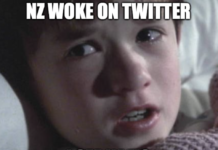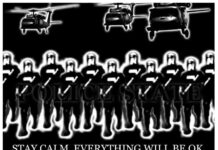
News that the TVNZ archive is to be made available to the public was lost in the budget coverage. It is something of a big deal for the social sciences and nostalgia freaks, and it comes with a big price tag. Under the gloss applied by the government it’s a sick rort: decades of TV licence fees funded all of these programmes that have been commercially exploited and put behind a Sky TV paywall by TVNZ as the Heartland channel and now the government is paying TVNZ a ransom to get it all back. What a racket.
Craig Foss and Peter Dunne released a joint statement of this achievement as Ministers of Broadcasting and Internal Affairs respectively. Which was odd since this was being done under the aegis of the Ministry of Culture and Heritage (whose Minister, Chris Finlayson, acknowledged the budgetary responsibility merely as ‘maintenance of the TVNZ archive’ through another acerbic and withering personal attack on his Labour opposite, Jacinda Ardern).
From what I can fathom of the supposed “negotiation” with TVNZ by the government – as absurd as that sounds when the government owns 100% of the company and all the content up until full corporatisation in 1989 was public broadcasting anyway – $16.4m mostly from the sell off of the state power companies will be be paid mostly to TVNZ for the archive which should have been in the public domain in the first place. Then it will cost $2m a year to run it. But really where is the value here? Some name plates will have to be changed and some new stationary ordered and a nice website done up – why should that cost $2m every year? I saw digitisation being mentioned in the news clip but no details in their statement.
If they are going to release everything of the half a million hours they have we may well discover that it is even more tedious and awkward than when we saw it in 1983.
When we hear stories about original episodes of Dr Who being recorded over due to penny-pinching at the BBC, we naturally recoil and are astounded and appalled by the desecration; but someone wiping a whole season’s worth of Close to Home on the other hand… those who remember that TVNZ soap will be hoping the other dozen seasons got wiped as well. Dreary doesn’t begin to describe it. It was so dreary, with washed out beige and tan and state house torquiose and dim lighting that it might as well have been in black and white. In other words it was exactly what NZ looked and sounded like then and to be reminded of it won’t be high on anyone’s list. If most of what the online vaults contain is stuff like that then many of the later episodes will be stuck on 0 views. Social anthropologists, historians, political studies students etc. will find these archives of worth, not drama critics or general audiences.
The commitment to access via the internet is wonderful, but did the government have to sell off Genesis to do it? Why doesn’t TVNZ have to run Heartland on Freeview as part of the deal? This is a corporate sweetheart arrangement to make TVNZ’s books better and appease the bureaucratic elite which has some traction now the Tories have run out of policy of their own. TVNZ gets to keep all the cream for free while they sell the milk back to the owner of the cow.
In other words a Wellington shell game will take place where things are all switched around and given new names and everyone has a finger in the pie if not a slice of it. Thus the involvement of the Minister for Wellington, Peter Dunne – as Internal Affairs is going to own the land and archive building – and Craig Foss, the Hawkes Bay blue ribbon bumpkin – as TVNZ comes within his Broadcasting portfolio. The NZ Film Archive is to run it so that also includes Finlayson with Arts, Culture and Heritage.
The governmental money-go-round of internal reorganisation. All the critters in the Crown’s ecosystem get to drink at the capital waterhole. The Film Archive could hire 50 people with that money, so one wonders where it will all go and how many lattes that works out to.
And in seemingly unrelated news I see Minister Amy Adams has floated a levy on TV sets to pay for her ministry’s bungling of the recycling contract for the old tube TVs. This is to make the buyer pay the cost of eventually recycling the set, but it would also be a good way to part-fund a public broadcasting institution as outlined in my comments to an earlier review. I suggested a licence fee for a Radio-Television simulcast system to be charged as a levy on devices in the same manner as the discussion document outlines, although my mobile figures are conservative now I see they are saying NZ abandons two million old mobile phones every year. If national sales are even a fraction of that, say 500,000 pa, at $25 per device would amount to $12.5m pa; but if it is as high as two million then it could raise $50m (more than RNZ’s total current annual funding).
Dissatisfaction with public service broadcasting is not just confined to complaints about funding restrictions. Radio New Zealand’s monocultural status quo is unacceptable. Combined with David Farrar’s constant sniping, and the traditional concerns of the right, change may come upon RNZ after the election no matter which party takes government.





One problem that has concerned me is the zero-funding increase for Radio NZ since 2008. This, of course, is a politically-motivated attempt to strangle the State broadcaster by cutting it’s funding (a zero increase is a budget cut, once inflation is factored in, before certain pedants chip in with their 10 zlotys worth).
One way around this is to tie funding for Radio NZ to the Remuneration Authority aegis, so that when MPs receive a pay rise – so does Radio NZ receive a funding boost.
Indeed, this system could be used for salaries for all state sector workers so that when politicians get a pay rise, so do teachers, police, nurses, doctors, and workers in various ministeries and govt departments.
What politician could possibly argue such fairness?
Comments are closed.